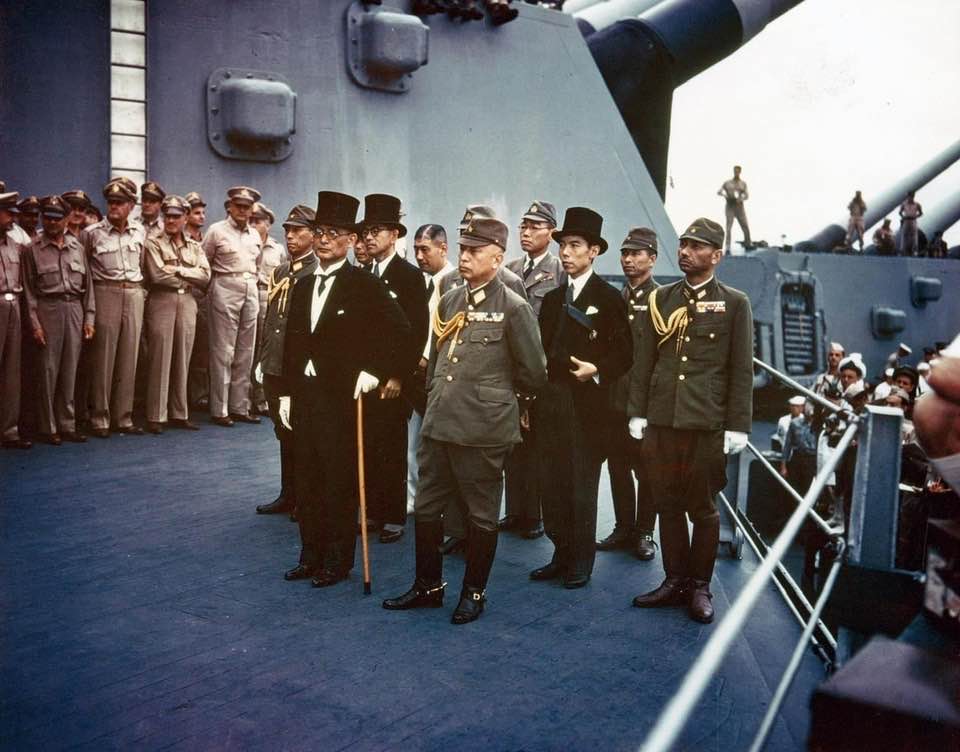
Representatives of the Empire of Japan stand aboard USS Missouri prior to signing of the Instrument of Surrender. (Photo: Library of Congress)
On Sept. 2, 1945, representatives from Imperial Japan signed the official Japanese Instrument of Surrender on the deck of the USS Missouri, thereby ending the Second World War.
Dec. 7, 1941: The Pacific War Begins With a String of Allied Defeats
The Attack on Pearl Harbor marked the beginning of several critical defeats suffered by Allied forces at the hands of the Japanese. For the next six months, Imperial Japan would conquer territory throughout the South Pacific while Nazi Germany continued its expansion in Europe.
The first signs of a momentum shift would not occur until early May 1942, when the U.S. Navy forced a stalemate at the Battle of the Coral Sea. Though neither side could definitively claim victory, the results of the battle paved the way for future Allied success soon after.
June 7, 1942: Japan Suffers a Critical Defeat at the Battle of Midway
Many historians now agree that the U.S. Victory at the Battle of Midway may be one of the most pivotal sea battles ever fought. By the end of the three-day battle, the Imperial Japanese Navy had suffered a catastrophic blow, the losses of which it was never able to replenish.
By contrast, victory at Midway only served to further boost American morale and its industrial superiority. Within weeks, the United States would begin an increasingly successful island-hopping strategy to liberate the South Pacific.
Over the next three years, the United States and Allies would reclaim much of the territory occupied by the Axis Powers. While the United States engaged Japanese forces throughout the Pacific, Nazi German forces would be driven from North Africa, and eventually Europe after the combined efforts of the D-Day Landings in Normandy and Soviet victories on the Eastern Front.
Aug. 15, 1945: Imperial Japan Signals Its Intent to Surrender After the Atomic Bombings of Hiroshima and Nagasaki
Gen. Douglas McArthur and Adm. Chester Nimitz sign the Japanese Instrument of Surrender on Sept. 2, 1945. (Photo: U.S. Library of Congress)
Shortly after a costly Allied Victory at the Battle of Okinawa, President Harry S. Truman authorized the Atomic Bombings of Hiroshima and Nagasaki to avoid an invasion of mainland Japan.
With the Soviet Union gaining ground in East Asia, the threat of the largest amphibious operation ever, and the veiled threat of further atomic bombings, Imperial Japan signaled its intent to surrender on Aug. 15, 1945, bringing about the unofficial end of World War II. Less than a month later, Japan would officially sign surrender documents.
To learn about additional U.S. veterans holidays and important events, click here.